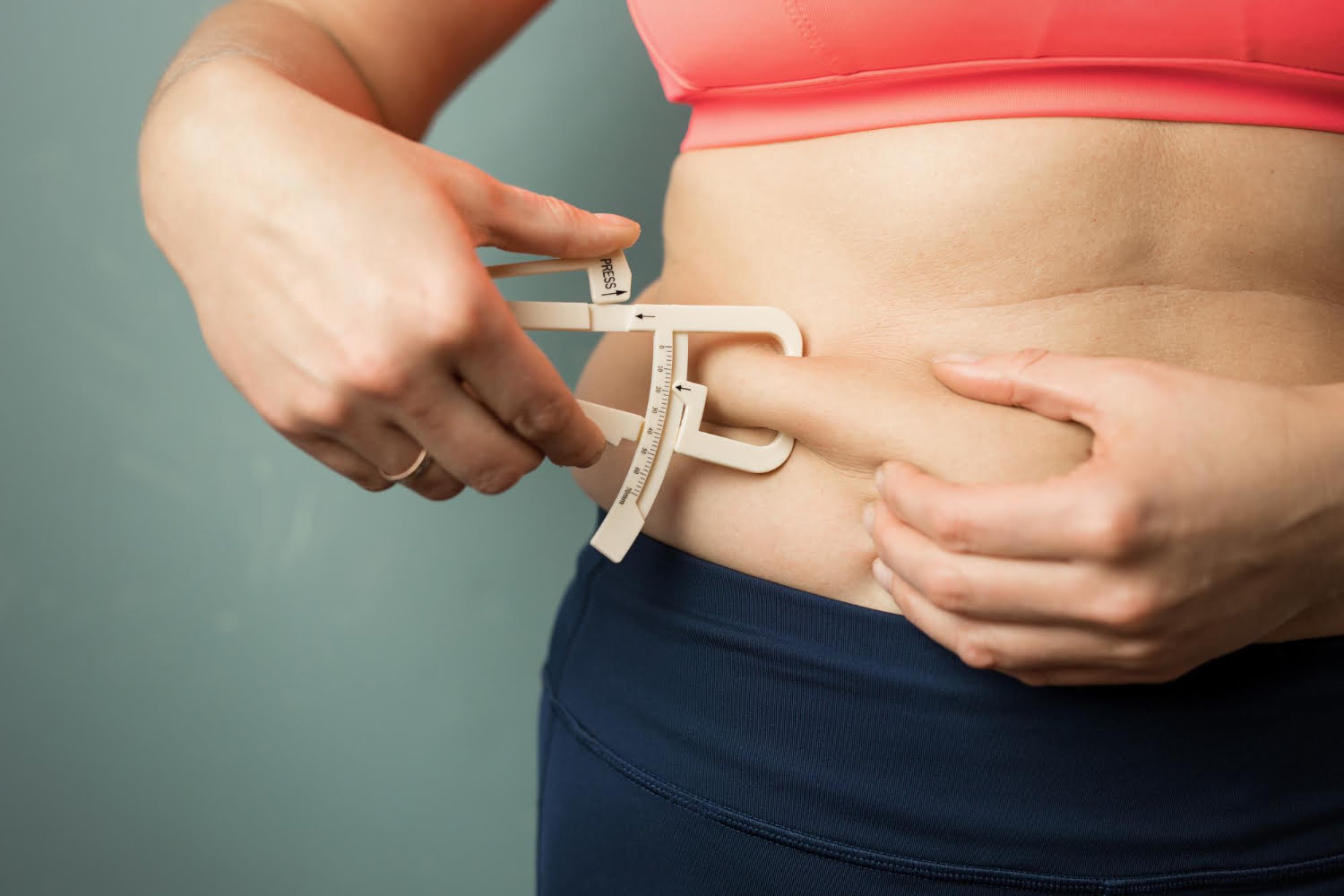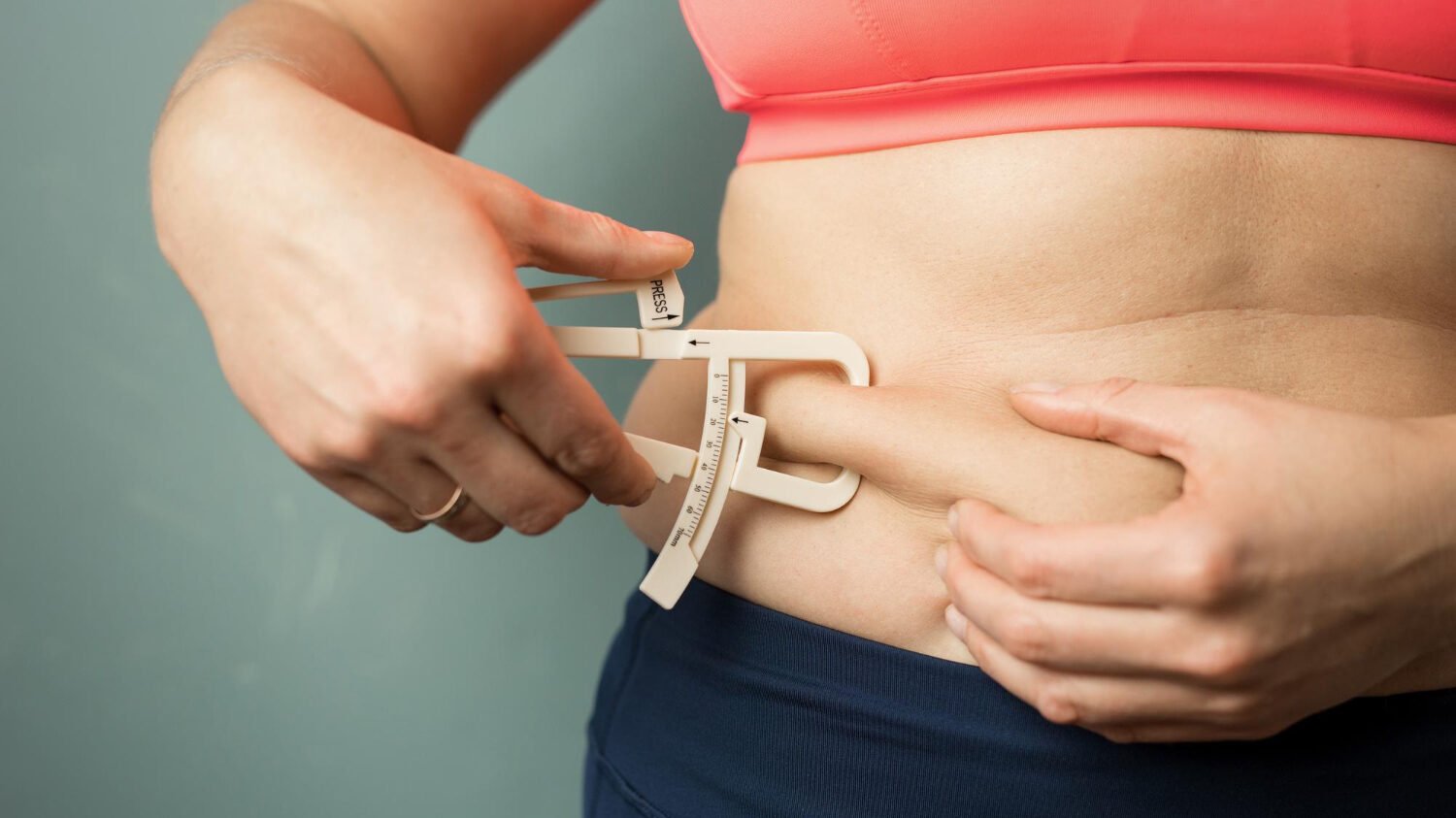3 Skinfold Body Fat Calculator

Embarking on a fitness journey often involves tracking progress through metrics beyond the scale, where body fat percentage holds significant sway. As someone with extensive experience in health and exercise science, I’ve witnessed firsthand how understanding one’s body composition can unlock personalized strategies for optimal health.
The 3 Skinfold Body Fat Calculator stands as a beacon of precision for those delving into the specifics of their physical makeup without invasive procedures or costly equipment.
Efficient and accessible, this calculator harnesses the power of skinfold measurements to unveil insights about your adipose tissue—insights that can drive informed decisions about diet and exercise.
Utilizing just three key data points from gender-specific locations on your body, it arms you with an estimate reflective of both fat mass and lean muscle. Get ready to uncover what lies beneath; let’s dive into a world where numbers truly speak volumes about your health.
Key Takeaways
- The 3 Skinfold Body Fat Calculator provides an efficient and accessible method for estimating body fat percentage using skinfold measurements taken at three specific sites on the body.
- Understanding body fat percentage is crucial for assessing overall health and fitness levels, as it distinguishes between lean muscle mass and excess fat, providing insights that can drive informed decisions about diet and exercise.
- By utilizing a calculation formula based on gender-specific equations and demographic factors including age and weight, the 3-site skinfold calculator computes an accurate estimate of body fat percentage, allowing individuals to track progress towards their health and fitness goals effectively.
Understanding Body Composition
Body fat percentage is the proportion of fat in the body compared to lean mass. Measuring body fat is important for assessing overall health and fitness levels.
What is body fat percentage?
Your body fat percentage is a measure of how much of your weight is made up of fat. Think of it as a way to understand the balance between what you might call ‘fat mass’ and everything else that makes up your body, which we refer to as ‘lean mass.’ This includes muscles, bones, organs, and water in your system.
Calculating this figure can tell you more about your health than just stepping on a scale. Muscle tends to be heavier than fat, so two people with the same weight could have vastly different body compositions.
A skinfold body fat calculator provides an assessment by measuring folds of skin at specific sites on the body. These measurements help estimate the amount of subcutaneous fat—the layer of fat right under the skin—and from there, calculate what percentage they make up of your overall weight.
The 3-site skinfold method considers three key points on your physique for measurement—each chosen because they give insights into total body fat stores in genderspecific ways.
Importance of measuring body fat
Understanding body fat percentage is just the beginning; knowing why it’s crucial to measure your body fat can change the game for achieving health and fitness goals. Measuring body fat serves as a more accurate indicator of fitness than weight alone, as it helps distinguish between pounds that come from lean muscle mass and those from excess fat.
This differentiation is vital for tailoring diet and exercise plans effectively.
Keeping an eye on body fat percentages using tools like skinfold calipers or a 3 skinfold body fat calculator can significantly contribute to preventing diseases associated with high levels of body fat, such as cardiovascular issues and diabetes.
For athletes, precise measurements are essential to optimize performance by finding the ideal balance between muscle and fat in their bodies. Whether looking to maintain a healthy lifestyle or improving physical condition, regular monitoring through methods like the 3 site skinfold test provides valuable feedback on progress without being misled by simple scale readings.
Different Methods of Measuring Body Fat
When it comes to measuring body fat, there are various methods available, including skinfold measurements with calipers, the navy tape measure method, and the Durnin and Parrillo methods.
Each of these techniques has its own protocol for taking measurements and calculation formulas to estimate body fat percentage.
Skinfold Measurements with calipers
Measuring body fat with calipers is a reliable approach to assessing your fitness level and health. The skinfold method calculates body fat percentage by pinching certain areas of the skin.
- Identify the three measurement sites: For men, these are usually the chest, abdomen, and thigh. Women typically measure the triceps, suprailiac (just above the hip bone), and thigh.
- Use proper skinfold calipers for this method. Ensure they are calibrated correctly before use to get accurate measurements.
- Have a trained professional take your measurements if possible. Precise technique is crucial for consistent results.
- Stand relaxed while measurements are taken. The individual should not be flexing muscles as this can affect skinfold thickness.
- Pinch the skin firmly between your thumb and forefinger. Place the calipers about 1 cm away from your fingers.
- Read the caliper measurement one to two seconds after releasing the handle. This allows time for the caliper’s pressure to stabilize without compressing the skin too much.
- Record all measurements immediately. It’s best to take multiple readings at each site to ensure accuracy—typically three times—and use their average in calculations.
- Input these averages into a 3 – point skinfold body fat lean body mass calculator or apply them to an established formula like Jackson & Pollock’s calculation method.
Navy tape measure method
After understanding the Skinfold Measurements with calipers, it’s essential to explore the Navy tape measure method for measuring body fat. This method involves taking specific measurements using a tape measure and applying them to a formula to estimate body fat percentage.
- Step-by-step Process: The Navy tape measure method involves taking measurements of the waist, neck, and height.
- Specific Measurements: Measurement of the waist is taken at the navel level, and measurement of the neck is taken just below the larynx.
- Calculation Formula: These measurements are then used in a specific formula developed by the U.S. Navy to estimate body fat percentage.
- Body Fat Percentage Estimation: The formula takes into account gender, as well as weight and height measurements, providing an estimation of body fat percentage.
Durnin and Parrillo methods
The Durnin and Parrillo methods, like the Navy tape measure method, are based on skinfold measurements. These methods use calipers to measure skinfold thickness at specific sites on the body. The resulting measurements are then used to estimate body fat percentage. Here’s a breakdown of the Durnin and Parrillo methods:
- Pinch and Measure: Calipers are used to pinch and measure skinfold thickness at up to four different anatomical sites on the body, including the triceps, biceps, subscapular, suprailiac, abdominal, and thigh.
- Protocol Consistency: To ensure accuracy and consistency, it’s important to follow a standardized protocol for taking skinfold measurements using calipers. The same anatomical sites should be measured each time with precise technique.
- Age Consideration: The Durnin and Parrillo methods take into account age as a factor in estimating body fat percentage, recognizing that age can affect where fat may be stored on the body.
- Gender Adjustment: For more accurate results, separate formulas are used for males and females when estimating body fat percentage using the Durnin and Parrillo methods.
3-Site Skinfold (Jackson & Pollock) Calculator
The 3-Site Skinfold (Jackson & Pollock) Calculator involves specific protocols for taking measurements and utilizes a calculation formula to determine body fat percentage based on the skinfold measurements.
Protocols for taking measurements
To properly measure body fat using the 3-site skinfold method, ensure the following protocols are followed:
- Use a skinfold caliper to measure at three specific sites: triceps, suprailiac, and thigh for females; chest, abdomen, and thigh for males.
- Pinch the skin and underlying fat at each site firmly but gently with the calipers, ensuring to maintain a horizontal pinch.
- Take each measurement on the right side of the body unless it is not possible due to injury or surgery.
- Record each measurement accurately in millimeters and repeat twice for accuracy. Ensure that each pair of measurements falls within 1-2 mm of one another.
- Calculate an average from these two measurements and use the values in the body fat percentage formula.
Calculation formula
After obtaining skinfold measurements using the specified protocols, calculate body fat percentage with the 3-site skinfold calculator by applying the Jackson & Pollock formula. Utilizing gender-specific equations and demographic factors including age and weight, this method computes an accurate estimate of body fat percentage.
The calculation accounts for variations in body composition between males and females to provide precise results. By integrating these inputs into the equation, individuals can determine their body fat percentages based on three-site skinfold measurements in a straightforward process.
This approach also facilitates quantifying lean mass and fat mass ratio by utilizing the calculated body fat percentage to establish a clear understanding of overall body composition.
Body fat classification chart
Once you have used the 3 skinfold body fat calculator to determine your estimated body fat percentage, the next step is to interpret this number through a body fat classification chart. This chart provides a range of body fat percentages categorized by levels such as essential fat, athletes, fitness, acceptable, and obese. These classifications help you understand where you stand in terms of health and fitness.
Here’s an example of what a body fat classification chart could look like in HTML table format with border:
| Classification | Women (% Fat) | Men (% Fat) |
|---|---|---|
| Essential Fat | 10-13% | 2-5% |
| Athletes | 14-20% | 6-13% |
| Fitness | 21-24% | 14-17% |
| Acceptable | 25-31% | 18-24% |
| Obese | 32% and above | 25% and above |
By referencing the body fat classification chart, users can set realistic goals for weight loss, muscle gain, or maintenance. These categories serve as a guide to assess risk factors associated with too low or too high body fat levels. Note that age and ethnicity might also affect the interpretation of body fat percentages. Individuals should always consider consulting with health professionals for personalized assessments.
Choosing the Right Body Fat Calculator

Consider factors such as accuracy, ease of use, and additional resources for tracking body fat percentage. Find the best method for your needs and start monitoring your progress today! For detailed information on different body fat calculators and their benefits, keep reading our blog.
Factors to consider
When choosing a body fat calculator, consider the following factors:
- Accuracy of the method in estimating body fat percentage and lean mass.
- Suitability for different body types and fitness levels.
- Cost of the calculator or tools required for measurement.
- Accessibility and ease of use for consistent testing.
- Comparison with other body fat assessment methods for reliability.
Accuracy of different methods
The accuracy of body fat measurement methods can vary significantly, with some methods being more reliable than others. Below is an HTML table that compares the accuracy of different body fat measurement methods, including the skinfold body fat calculator and others.
| Method | Accuracy | Pros | Cons |
|---|---|---|---|
| Skinfold Calipers (3-Site) | ±3-5% | Portable, Quick, Inexpensive | Technique-sensitive, Variability between testers |
| Navy Tape Measure Method | ±3-4% | Simple, No special equipment needed | Can be less accurate for certain body types |
| Durnin/Womersley Method | ±2.5-3.5% | Widely studied and validated | Requires four-site measurements, More complex |
| Parrillo Method | ±4% | Considers 9 different skinfold sites | Time-consuming, High variability |
| DEXA Scan (Dual-Energy X-ray Absorptiometry) | ±1-2% | Highly accurate, Provides detailed body composition | Expensive, Less accessible |
| Bioelectrical Impedance Analysis (BIA) | ±3-8% | Quick, Non-invasive | Affected by hydration levels, Less accurate than other methods |
| Hydrostatic Weighing | ±1.5-3% | Accurate, Gold standard for many years | Impractical for routine use, Requires special facilities |
| Air Displacement Plethysmography (Bod Pod) | ±2-3% | Accurate, Quick | Can be expensive, Sensitive to hair and clothing |
This table reflects that while skinfold calipers using the 3-site method provide a good balance of accuracy, accessibility, and cost, they may not be as precise as some more advanced techniques like DEXA scans. However, for individuals and professionals looking for an efficient and relatively accurate way to track body fat changes, a body fat calculator skinfold 3 site remains a practical choice. It’s important to note that all methods have inherent variances and may require repeated measurements for consistency.
Remember, no single body fat measurement method is perfect, but using the body fat skinfold caliper calculator can provide valuable insights when used consistently and properly.
Additional resources for tracking body fat percentage
Now that you understand the accuracy of different body fat measurement methods, it’s essential to have additional resources for tracking body fat percentage. Online tools and mobile applications can provide convenient ways to monitor and calculate your body fat percentage over time.
These resources often offer features such as progress tracking, personalized recommendations based on your measurements, and visual representations of your body composition changes.
Some platforms also include community support or coaching services to help you stay motivated and accountable in reaching your fitness goals.
For those seeking a more detailed analysis, some fitness centers and healthcare facilities may offer advanced body composition assessments using techniques like dual-energy X-ray absorptiometry (DXA) or air displacement plethysmography (ADP).
Conclusion
In conclusion, the 3-site skinfold body fat calculator offers a practical and efficient method for estimating body fat percentages. By utilizing this tool, individuals can gain valuable insights into their body composition, enabling them to track progress and make informed decisions regarding their health and fitness goals.
The impact of accurately measuring body fat percentage cannot be overstated, as it provides essential information for optimizing overall well-being. For those seeking additional guidance or resources, exploring further reading on body fat assessment methods can offer valuable knowledge and support along their journey towards better health.
With the right tools and knowledge at hand, individuals are empowered to take proactive steps in managing their body composition effectively.
FAQs
1. How does a 3 Skinfold Body Fat Calculator work?
A 3 Skinfold Body Fat Calculator uses caliper measurements from three places on your body to estimate body fat percentage using specific formulas.
2. Is the skinfold method calculation different for men and women?
Yes, gender-specific body fat calculations are used because men and women typically store fat differently, so separate formulas account for these differences.
3. Can anyone use a body fat percentage calculator?
Absolutely! Whether you’re looking into obesity assessment or just curious about your lean mass, this calculator can help people of all sizes understand their body composition.
4. What do I need to perform a body fat analysis at home?
You’ll need a set of reliable skinfold calipers and knowledge of where to take anthropometric measurements on your body for accurate results.
5. Why is knowing my body fat important?
Understanding your body’s fat to lean mass ratio can guide you in health decisions and give insights beyond what a simple Body Mass Index (BMI) number offers.







